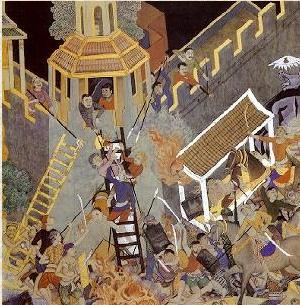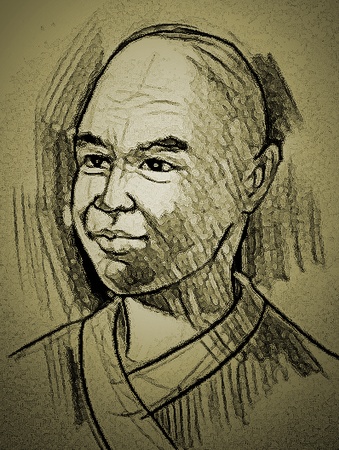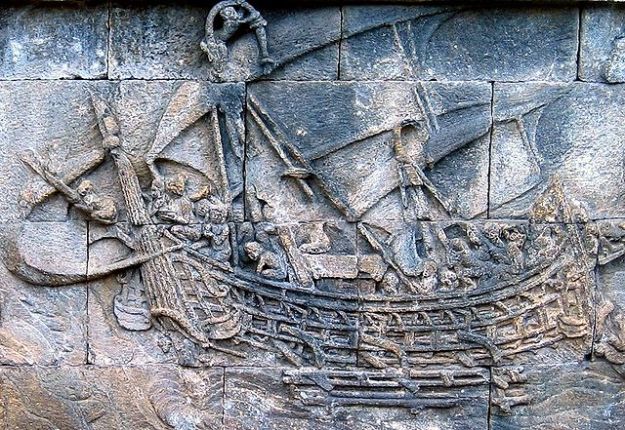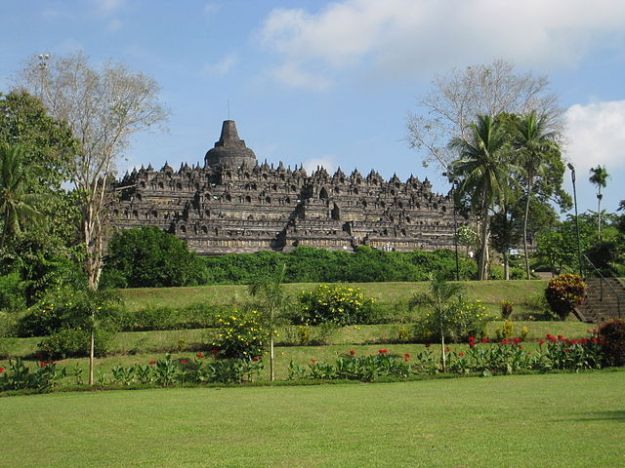There are empires in this world which are totally forgotten, of that there is no doubt. People nowadays who are descendants of ancient rulers, walking around unaware of their noble heritage. Such was the case with the ancient empire of Srivijaya, which once ruled the seas of Southeast Asia. Yet it was not until the 1920s that the people of modern Sumatra, in Indonesia, had their imperial ancestry rediscovered. From the writings of a Chinese monk, a few scattered inscriptions, and ancient temples of previously unknown origin, rose the shape of one of the great empires of the age, which had faded into the shadows for centuries.
Sri Vijaya, “great victory”. Founded, or so the inscriptions say, by Dapunta Hyang Sri Jayanasa. In the year 687 the Chinese monk Yi Jing, returning from a 25 year pilgrimage, passed through Srivijaya during the reign of King . He was so impressed by the standard of Buddhist scholarship in thee country that he stayed there for eight years, working on translating the local texts. Buddhism was the chief religion of the region at the time, as Islam had yet to spread this far. Monks from all over the area came to study at “the fortified city of Bhoga”, which archaeologists have identified as being in the area of modern Palembang. From Yi Jing’s accounts, we can get a picture of the region, and the influence of Srivijaya within it.
Around this time, King Jayanasa launched a military expedition to turn his kingdom into an empire. With a reported 20,000 troops he conquered the neighbouring kingdom of Malayu. Quite where Malayu was is a matter of some debate, but what is certain is that it was rich, with gold mines that did much to boost the new Srivijaya empire. From here Jayanasa expanded south, conquering almost all of Sumatra as well as several neighbouring islands, and controlling the seas around them. Srivijaya’s most valuable asset was not the land it conquered, but what this enabled. It was a thalassocracy, an empire of the sea that controlled the valuable trade routes from China to India. Like the maritime kingdoms of the Mediterranean, it grew wealthy through this control.

A torso of the Buddha from the Bangkok National Museum, one of the few examples of surviving Srivijayan art outside of Borobudur.
Keeping control of these trade routes inevitably led to more conflict. Rival ports that sought to service the route had to be conquered or destroyed, and so the Srivijayan sphere of influence expanded to include much of the Malay peninsula, along with the island of Java and the smaller island of Bangka, and even extended to the coast of Thailand. The city of Chaiya in Thailand was an important regional centre for Srivijaya, and may even have served as its capital during its waning period. Another theory is the capital may have moved temporarily to the island of Java, and some scholars posit a Srivijayan origin for the Sailendra dynasty who ruled the island. All of this is speculative, however. What is certain is that in 1025, Palembang was sacked by Chola pirates from India, and the capital was moved to Jambi, in the north of Sumatra.

Mural depicting the Chola attack on Srivijaya. This picture is notable for showing the first use of a flamethrower weapon by Indians.
The destruction of Palembang was the beginning of the end of the Strivijaya empire.The Chola were an ancient dynasty in southern India. What precipitated their raid on Palembang is unknown, as it was not normal behaviour for them, but it was ccertainly a profitable venture for them The capital of Srivijaya would shift between Palembang and Jambi henceforth, and this both signalled the weakened state of the empire and helped to weaken it further. Chinese records report the rise of a rival kingdom in Java, which unlike the staunchly Buddhist Srivijaya instead supported both Buddhism and Hinduism. Srivijaya survived, but was “infested by robbers and thieves” – definitely no longer a healthy state. The Javanese rival may have conquered Srivijaya, and sedimentation in the rivers preventing their navigation may have crippled them economically. The true end of Srivijaya came in the late 13th century, however, with the arrival of Islam in the archipelago. In 1400, a Singapore noble named Parameswara (but known more colourfully as Iskander Shah) fled from Singapore to found a new city at the mouth of the Malacca river on the Malay peninsula, where he established the Malacca Sultanate. This kingdom swiftly gained ascendancy throughout the area, and though it was conquered by the Portuguese in 1511 it was this country that gave the region its cultural identity, such that modern Malaysia derives its unity and sense of identity from the sultanate.
It was this unity, then, that probably caused the sultanate to persist through the centuries in the minds of the conquered people, while knowledge of Srivijaya faded. Even its cities were abandoned, the most famous of these the great Buddhist temple of Borobudur. Even to this day, it is the world’s largest Buddhist temple, but in the 14th century it was abandoned to the jungle. It was the British colonial ruler of Java, Sir Thomas Stamford Raffles, who in 1814 ordered the expedition that cleared the temple and brought it to the attention of the world. Over the following decades archaeologists continued to examine the ruins, and restoration work was even carried out to stabilise the damage the jungle had done. Eventually, in 1973 UNESCO declared it a World Heritage Site and funded a major restoration effort, and now the restored temple is the most visited tourist attraction in Indonesia, and the destination of many Buddhist pilgrimages. Perhaps it is fitting, that the kingdom that we first learned about from the account of a Buddhist pilgrim should have produced an object that is, itself, now the object of such pilgrimages. No matter how much is forgotten, such things as this remain.





Pingback: Today’s Scribbling: The Srivijaya Empire | Daily Scribbling